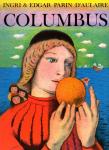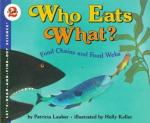Elementary
American Cardinal Readers
The American Cardinal Readers are Catholic Readers originally published around 1930. They were reprinted in 1996 by Neumann Press in very nice hardcover editions. This series is quite popular among Catholic homeschoolers. They are a little more enjoyable and more engaging than the Catholic National Readers, and perhaps more beautifully written (in the way that older books tend to be) than the Faith and Freedom Readers.
Francis and Clare
Columbus
This is another great biography by the D'Aulaires. Well told and beautifully illustrated, this book will introduce you to Columbus' boyhood dreams, some of the reasons why he (and others) believed the earth was round, his early sailing days and interest in the tales of Leif Ericson, and of course the story of his family, his long quest for sponsorship of his desired trip and finally his voyages to America. Most adults don't know as much about Columbus as your children can learn from this story.
Map Puzzles
The Lady of Guadalupe
This has been one of my family's very favorite picture books since our oldest was a toddler. It is a beautiful re-telling of a beautiful story with illustrations that complement it nicely and which are very appealing to children. I especially like Tomie de Paola's attention to detail. It's informative enough to be interesting even for adults.
The Orphans Find a Home
The Reb and the Redcoats
The Reb and the Redcoats is an adventurous historical fiction story about a British family during the American Revolution who "play host" to an American prisoner of war. 15 year old Randal is a well-educated Virginian who was sent on a military mission as a French interpreter. When he and his comrades are captured, he gives his captors no end of trouble with his escape attempts and is finally confined to an old penance cell at the estate of Laurence Templeton (which had once been a monastery). Things get interesting when Captain Templeton's elder sister, Mrs.
The Reb and the Redcoats
Who Eats What? Food Chains and Food Webs
This book explores the notion of various plants and animals that are linked together based on "who eats what." Children will learn about some simple food chains such as – leaf, caterpillar, wren and hawk. They also see how one plant or animal can belong to several food chains and that members or these related food chains (food webs) have a certain amount of dependence on each other. The text goes on to explain, through an example of a problem with over-hunted otters around the turn of the century, that when part of a food chain is disturbed, the other members will also be affected.









